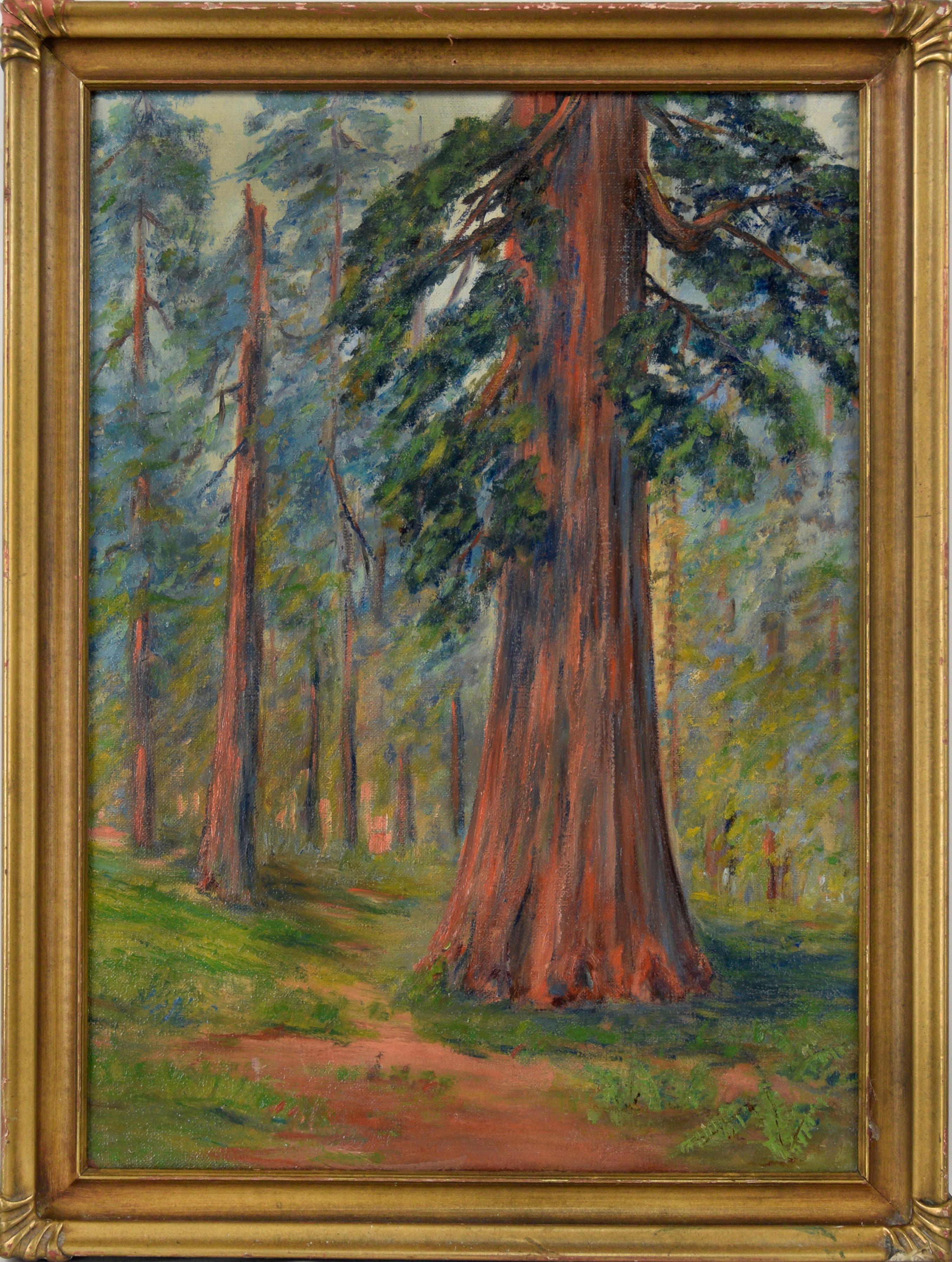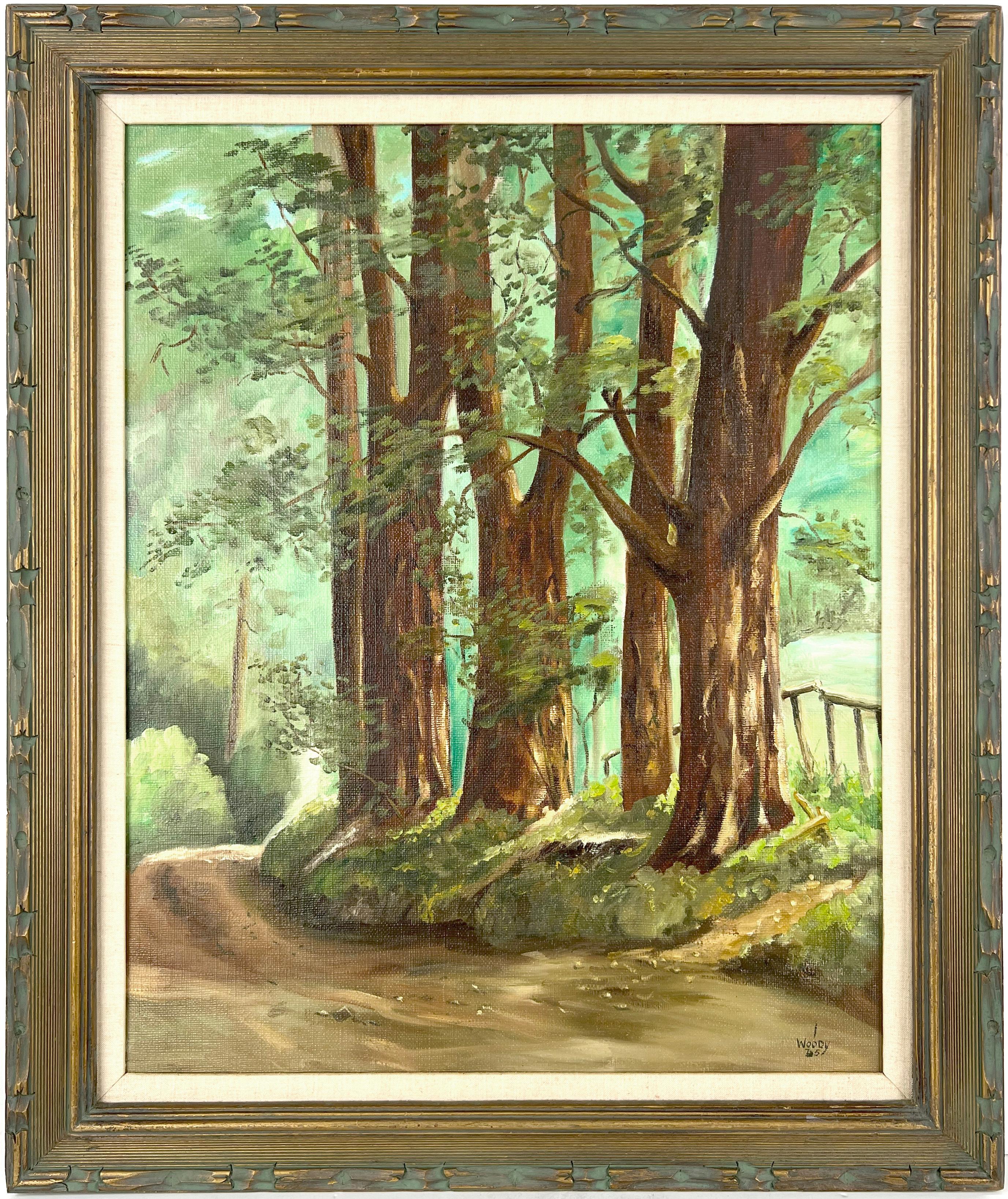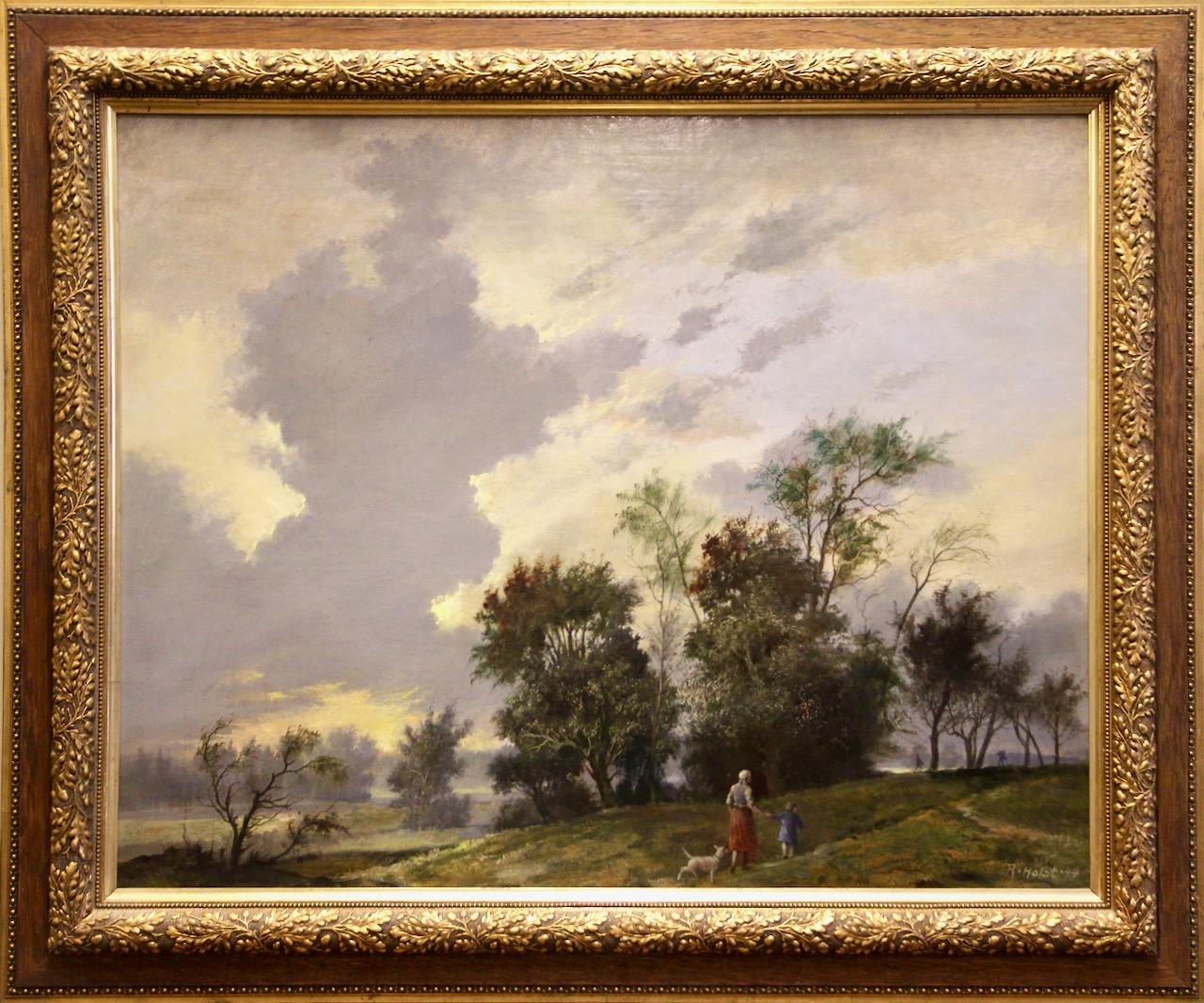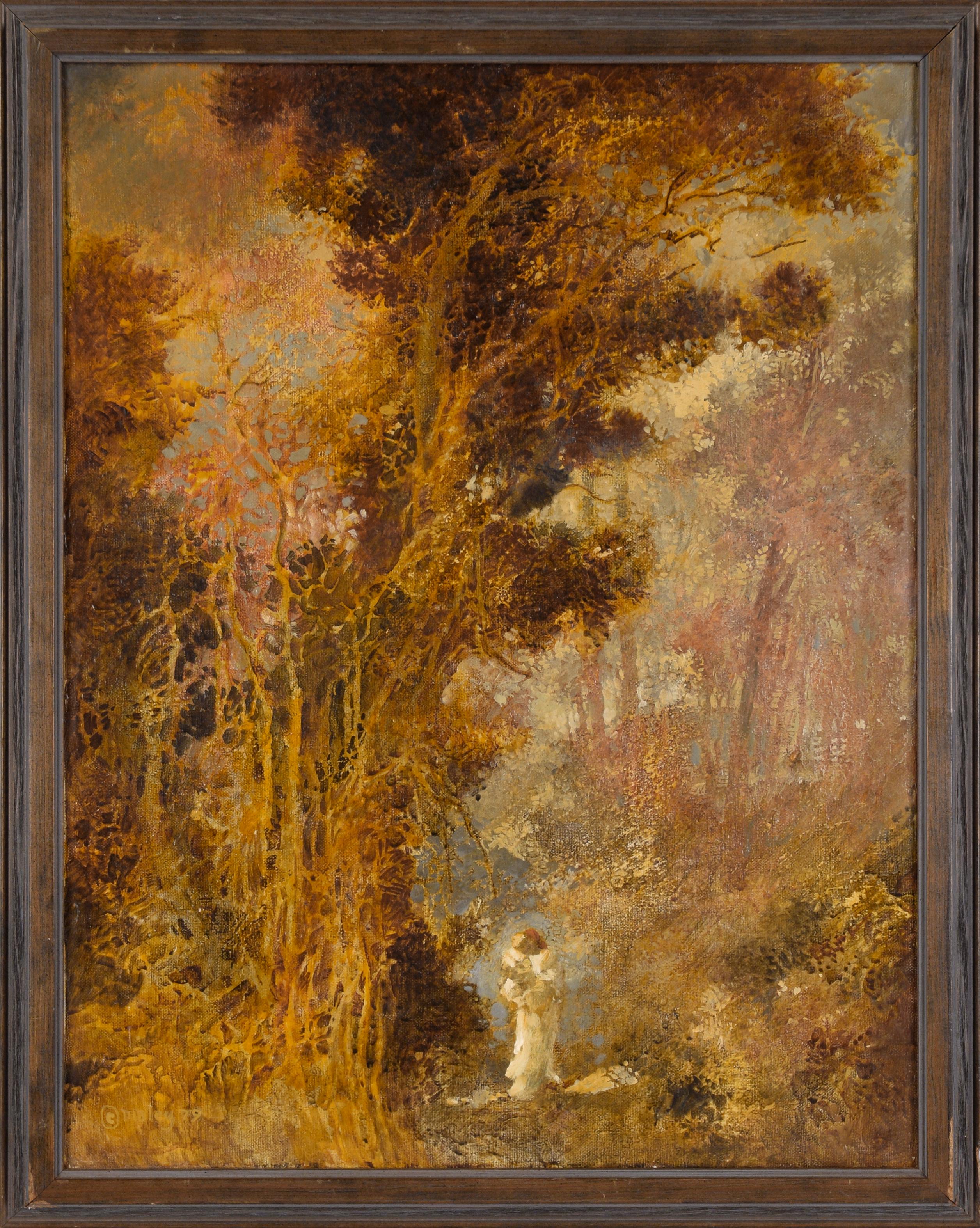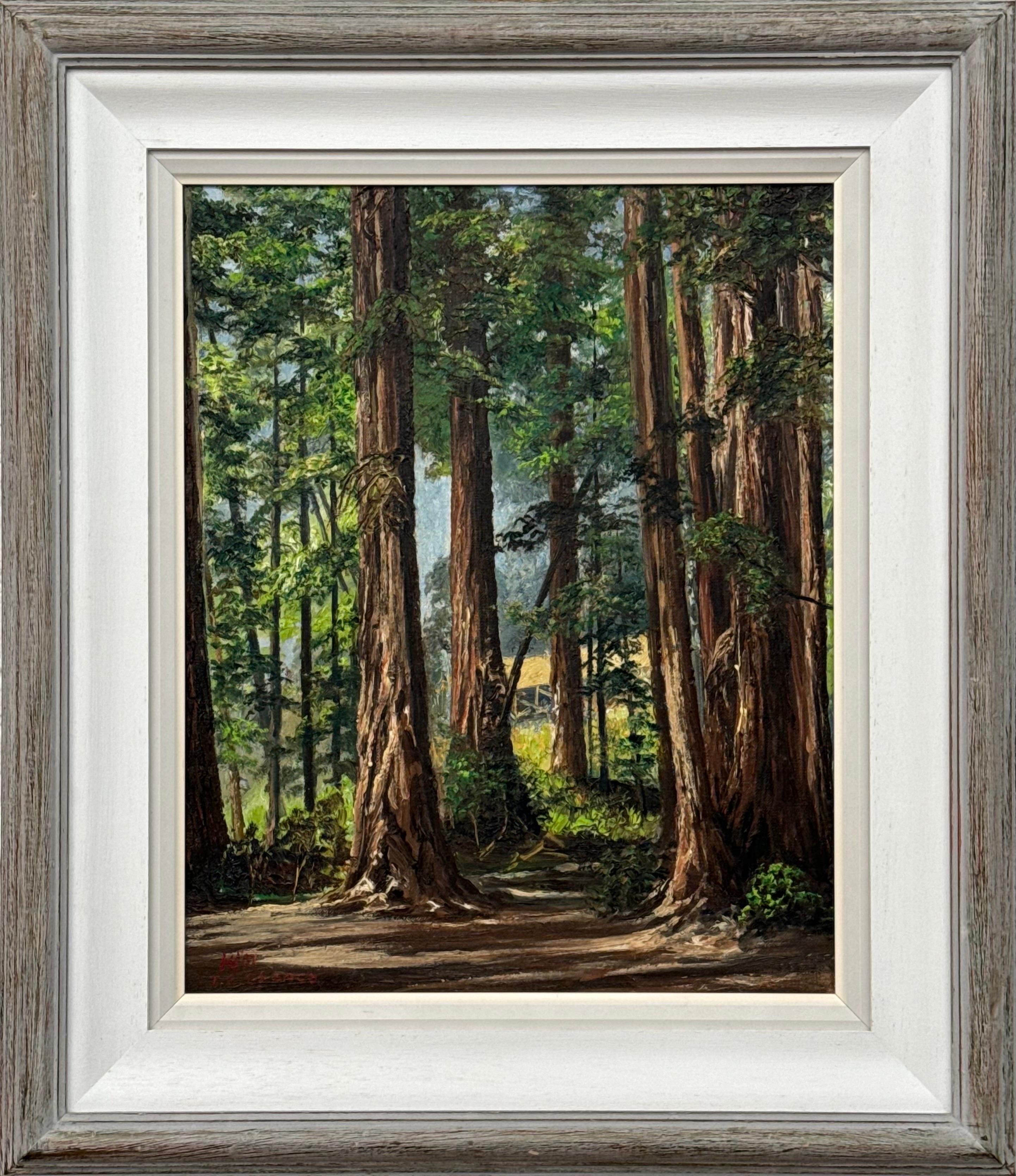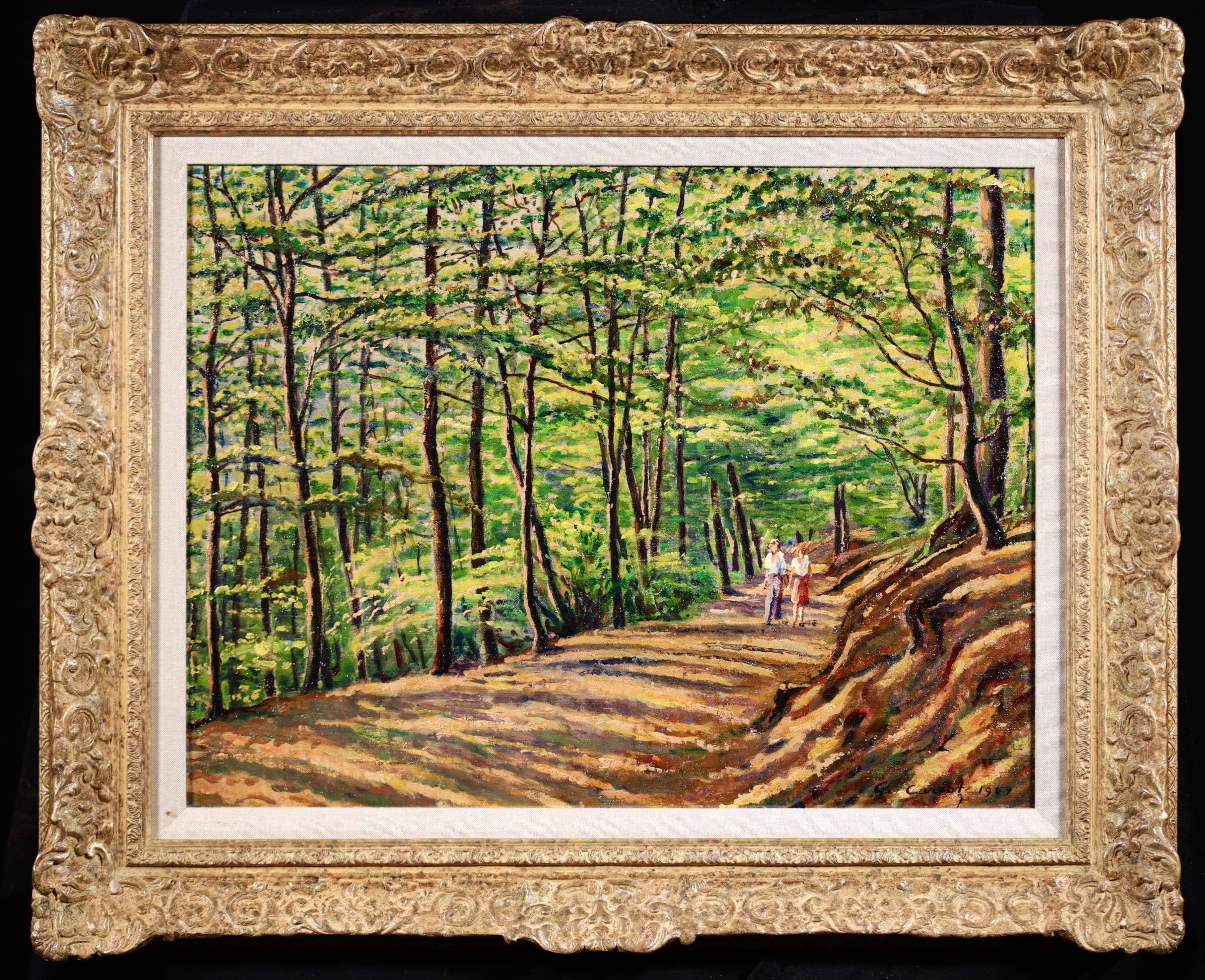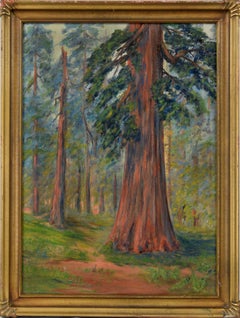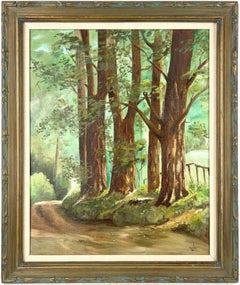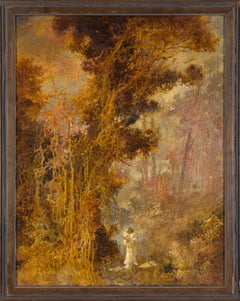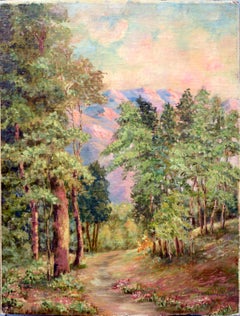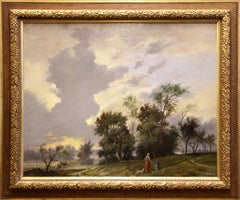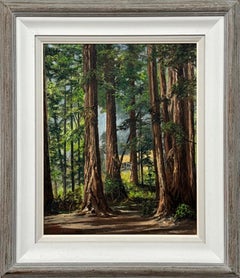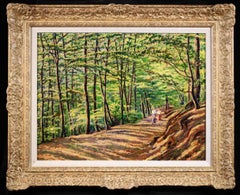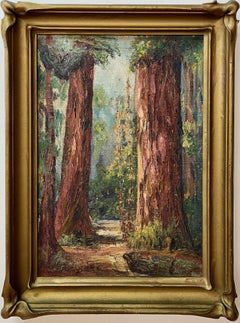Items Similar to Ohlone Mother and Child Walking Through the Santa Cruz Redwoods - Landscape 1930
Want more images or videos?
Request additional images or videos from the seller
1 of 13
Anton DahlOhlone Mother and Child Walking Through the Santa Cruz Redwoods - Landscape 19301930s
1930s
$5,500
£4,138.24
€4,780.98
CA$7,772.94
A$8,439.90
CHF 4,469.54
MX$103,448.96
NOK 55,312.36
SEK 52,267.25
DKK 35,683.25
About the Item
Serene depiction of an Ohlone Mother and Child walking a forest path by Anton Dahl (Swedish-American). Ohlone Mother and child are walking through the Northern California Santa Cruz redwood forest, towards the viewer. Through the forest behind them, there is a clearing with a fallen tree.
Signed "by A. Dahl" in the lower left corner.
Presented in a gold-colored wood frame
Canvas size: 18"H x 12"W
Anton Dahl (Swedish-American, 1894-1967) was born in Sweden and moved to northern California in the 1930s. He taught at the Los Angeles Art Institute from 1948 to at least 1955. He also taught in Santa Cruz and at the Detroit Art Museum School where he met his wife. He was a veteran of World Wars I and II and died on June 15, 1967 in the Veteran's Administration Hospital in Palo Alto. Dahl exhibited with the Painters and Sculptors of Los Angeles (1947) Scandinavian-American Art.
Ohlone Villages: Long before European-style towns sprang up along the coastal plains and valleys of the Santa Cruz Mountains, another people lived here. Season by season they followed the rhythms of nature just as their ancestors had, treading well-worn paths between their traditional villages on the plain and their gathering grounds in the foothills and mountains.
Banded together in “tribelets” of several hundred people, their names ring familiar today: the Aptos of the southern Santa Cruz County coast; the Sokel of the inland valley now known as Soquel; the Sayanta of the San Lorenzo Valley, later called Rancho Zayante; the Cotoni (cho-toni) of Davenport, gateway to the Cotoni-Coast Dairies National Monument.
These tribelets, who shared a way of life but considered themselves quite separate from their neighbors (they spoke very different dialects), are part of a culturally distinct group of indigenous people called the Ohlone. In the mid-1700s, before European contact, the Ohlone numbered some 10,000 people inhabiting a vast swath of land stretching from San Francisco south to Big Sur and extending roughly 50 miles inland. They had already been here for millennia when the first Spaniards showed up; some of their shell mounds are 4,000 years old. (excerpt from "Ohlone People of Santa Cruz County" by by Traci Hukill)
- Creator:Anton Dahl (1894 - 1967, Swedish)
- Creation Year:1930s
- Dimensions:Height: 21.75 in (55.25 cm)Width: 15.75 in (40.01 cm)Depth: 1.5 in (3.81 cm)
- Medium:
- Movement & Style:
- Period:
- Condition:Painting has been professionally cleaned and treated with UV-resistant varnish. Some scratches on frame. Imperfections have been minimized, but frame is included "as-is". New hanging hardware included.
- Gallery Location:Soquel, CA
- Reference Number:Seller: DBH77581stDibs: LU54210018572
About the Seller
5.0
Platinum Seller
Premium sellers with a 4.7+ rating and 24-hour response times
Established in 1986
1stDibs seller since 2014
2,997 sales on 1stDibs
Typical response time: <1 hour
- ShippingRetrieving quote...Shipping from: Soquel, CA
- Return Policy
Authenticity Guarantee
In the unlikely event there’s an issue with an item’s authenticity, contact us within 1 year for a full refund. DetailsMoney-Back Guarantee
If your item is not as described, is damaged in transit, or does not arrive, contact us within 7 days for a full refund. Details24-Hour Cancellation
You have a 24-hour grace period in which to reconsider your purchase, with no questions asked.Vetted Professional Sellers
Our world-class sellers must adhere to strict standards for service and quality, maintaining the integrity of our listings.Price-Match Guarantee
If you find that a seller listed the same item for a lower price elsewhere, we’ll match it.Trusted Global Delivery
Our best-in-class carrier network provides specialized shipping options worldwide, including custom delivery.More From This Seller
View AllThrough The Redwoods - California Impressionism Circa 1930s
Located in Soquel, CA
Through The Redwoods - American Impressionist
American Impressionist oil painting depicting a forest of California redwood trees. A giant red...
Category
1930s American Impressionist Landscape Paintings
Materials
Canvas, Oil
$760 Sale Price
20% Off
"Back Road" California Redwoods Santa Cruz County Original Oil Painting
Located in Soquel, CA
"Back Road" California Redwoods Santa Cruz County original Oil Painting
Oil painting of the California Redwoods by Gorman Woody (American, 1907-2000). the scene is a country road ...
Category
1970s American Impressionist Landscape Paintings
Materials
Masonite, Oil
$1,160 Sale Price
20% Off
Woman and Child in the Woods - Midcentury Abstracted Landscape in Oil on Canvas
Located in Soquel, CA
Woman and Child in the Woods - Midcentury Abstracted Landscape in Oil on Canvas
Dramatic abstracted painting of a woman holding a child in the woods by Maley (20th Century). This pi...
Category
1970s American Modern Landscape Paintings
Materials
Canvas, Oil, Stretcher Bars
Early 20th Century Sierra Mountain Path California Landscape
Located in Soquel, CA
Vintage 1920's California landscape of a path through tall evergreen trees with the grand Sierra mountains in the background by listed female artist Willamean Soderberg Tufts (Americ...
Category
1920s American Impressionist Landscape Paintings
Materials
Linen, Oil, Cardboard
1920's Northern California Autumn Oak Trees Landscape
By Sydney Lemos
Located in Soquel, CA
Beautiful 1920's landscape of autumnal Northern California landscape with colorful oaks and mountains in the background by Sydney Lemos (Son of the artist William Lemos) (American, 1...
Category
1920s American Impressionist Landscape Paintings
Materials
Canvas, Oil
$1,320 Sale Price
20% Off
Two Trees, Country Road - Mid Century California Landscape
By Fred O. Bohne
Located in Soquel, CA
Charming rural landscape with a two lane country road, mountains in the background, and two trees in the foreground by Fred O. Bohne (American 19th-20th C...
Category
1960s American Impressionist Landscape Paintings
Materials
Canvas, Oil, Cardboard
$1,200 Sale Price
20% Off
You May Also Like
R. Holst, 1944, Oil Painting, Walk through the Forest, Mother with Child and Dog
Located in Berlin, DE
Decorative Painting by:
R. Holst, 1944, Walk through the forest, mother with child and dog.
Signed and dated lower right.
Dimensions without frame: 61 ...
Category
20th Century Landscape Paintings
Materials
Plywood, Oil
$3,351 Sale Price
20% Off
Free Shipping
Vintage Oil Landscape Art of Redwood Forest California by 20th Century Artist
Located in Preston, GB
Vintage Oil Landscape Art of Redwood National Park Forest in California by 20th Century Artist, Tobias Everet Spence
Art measures 14 x 17 inches
Frame measures 21 x 24 inches
Th...
Category
1950s Modern Landscape Paintings
Materials
Canvas, Oil, Wood, Paint, Wood Panel
A Walk in the Forest - Post Impressionist Landscape Oil by Gustave Cariot
By Gustave Camille Gaston Cariot
Located in Marlow, Buckinghamshire
Signed and dated oil on board figures in landscape by French post impressionist painter Gustave Cariot. The piece is set in Wiesbaden, Germany depicts a breathtaking view of the Rive...
Category
1930s Post-Impressionist Landscape Paintings
Materials
Oil, Board
The Timeless Beauty of California’s Redwoods
Located in San Francisco, CA
One feels very small yet peaceful strolling among Sequoia Sempervirens, California’s oldest living residents. And if that’s not enough to make a human feel insignificant, these coast...
Category
1930s Naturalistic Landscape Paintings
Materials
Canvas, Oil, Board
Alfred Jansson Signed Framed Oil Painting on Canvas, Sunlit Woodland Path
By Alfred Jansson
Located in Miami, FL
ALFRED JANSSON (1863-1931) – FOREST LANDSCAPE
Oil on Canvas ⚜ Signed ⚜ Dated ⚜ Framed
A STUNNING IMPRESSIONIST WOODLAND SCENE FROM 1909
This original oil painting by Alfred Jansson,...
Category
Early 1900s Impressionist Landscape Paintings
Materials
Oil, Canvas
$7,800 Sale Price
35% Off
Framed Mid 20th Century Oil - Redwood Trees
Located in Corsham, GB
A vibrant impressionistic oil of mighty redwood trees, soaring into blue skies. The artist has captured the organic study on an elongated canvas and presented the piece in a simple w...
Category
20th Century Landscape Paintings
Materials
Oil
$446 Sale Price
20% Off
More Ways To Browse
Antique Santas
Dior 1967
Santa Cruz Painting
California Redwood
1930s California
Antique Santa Painting
Redwood Painting
Mother Sweden
Redwood Forest
Anton Dahl
Oil Painting Children In Garden
20th Century Oil Paintings China
Vintage Street Scene Oil Paintings
Antique Marine Paintings
Mid Century Beach Scene Painting
Used Bennington
Abstract Cityscape Painting
Contemporary French Landscape Painting
